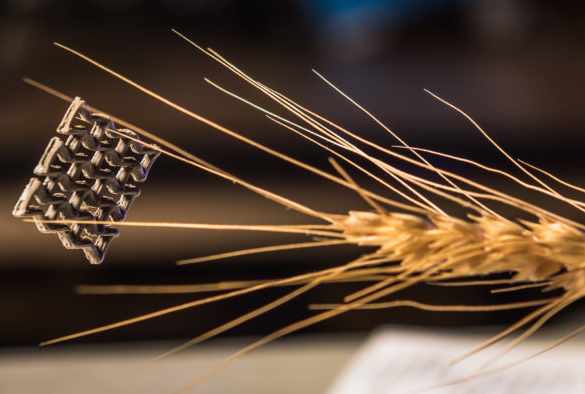
The record goes to a graphene aerogel developed by Dong Lin, assistant professor of industrial and manufacturing systems engineering at Kansas State University; Chi Zhou, assistant professor of industrial and systems engineering at the University at Buffalo; and Qiangqiang Zhang, associate professor at Lanzhou University. The material, which weighs 0.5 milligrams per centimeter, was developed in February of 2016 and will be featured in the 2018 edition of the Guinness Book of World Records.
“Graphene is a revolutionary material and it makes sense that its aerogel form would be just as important,” Lin said. “Our 3-D printed graphene aerogel has important properties that give the material many applications for better electronics, batteries or semiconductors.”
Graphene is already naturally a lightweight material, but the researchers use a special process to create the ultra-light aerogel. A modified, dual-nozzle inkjet printer is used to 3D print droplets of a graphene oxide and water mixture on a cold plate in a freezer, with a temperature of negative 20°C. This forms a sort of 3D printed ice/graphene sculpture, which is then placed into a freeze dryer to remove the ice and leaves behind the graphene aerogel in its 3D printed shape.
The researchers were only the third group in the world to 3D print graphene, and their method uses fewer ingredients – only graphene oxide and water – to form the material. The dual-nozzle method also allows them to 3D print complex shapes with less material.
“With this 3-D printing method, we can control the shape of the graphene aerogel and ideally, we can control the electric and mechanical properties for the aerogels, too,” Lin said. “Aerogel is a special material with a lot of applications and that’s why it is one of the hottest materials throughout the world.”
“We didn’t plan on setting a record, but it’s certainly a nice recognition of our work,” Zhou said. “I think this helps show the enormous potential that graphene aerogel has in our daily lives.”
Discuss in the Guinness World Records forum at 3DPB.com.
[Source/Images: Kansas State University]
